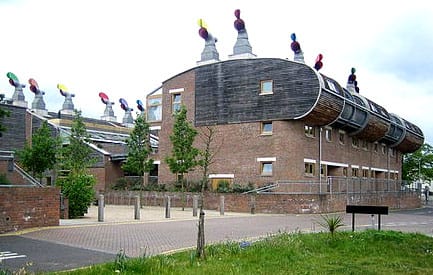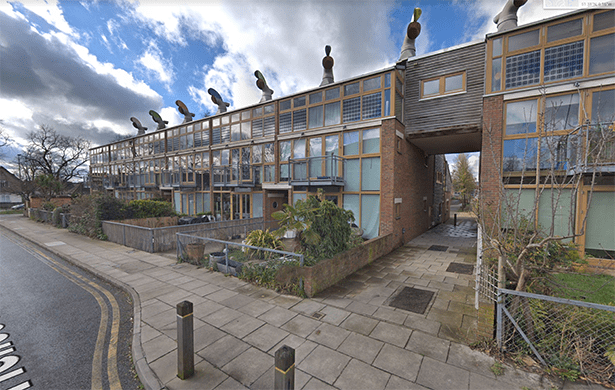BedZED Beddington Zero Energy Development
Hackbridge, Sutton, United Kingdom
Photo by Tom Chance, CC BY-SA 2.0
BedZED Beddington Zero Energy Development is a brownfield development that contains a mixed use sustainable community with residences, office space, community space. This zero-carbon development encourages a lifestyle dedicated to reducing electricity, heating, water and fossil fuel transportation demands.
100 homes
2000 - 2003
Peabody Trust, BioRegional Development Group, Bill Dunster Architects
Performance levels achieved:
Standard
Good
Better
Living
Regenerative
| Place | |
|---|---|
| Limits to Growth | |
| Food | |
| Habitat | |
| Transportation | |
| Water | |
| Energy | |
| Health + Happiness | |
| Civilized Environment | |
| Neighborhood Design | |
| Biophilia | |
| Resilient Connections | |
| Materials | |
| Material Plan | |
| Embodied Energy & Carbon | |
| Waste | |
| Equity | |
| Neighborhood & Access | |
| Access to Nature | |
| Access to Community Services | |
| Investment | |
| Beauty | |
| Inspiration |
Goals & Strategies:
Place
-
Food
Goals: Promote a local food network.
Strategies: Farmers market, walking distance to community garden.
Habitat
Goals: Increase biodiversity in the area.
Strategies: Garden plots, balcony gardens, green roof, reed wetland for waste water filtration.
Transportation
Goals: 50% reduction in resident vehicle mileage.
Strategies: Car sharing, bicycle infrastructure, walking paths between units, vehicle parking on periphery, proximity to public transportation.
Water
-
Water
Goals: Hot water consumption reduction by 33%, potable water consumption reduced by 33%, on site water treatment.
Strategies: Water efficient appliances, water meters monitor consumption, resident education, biofiltriation gardens that filters blackwater into greywater for use in non-potable applications.
Energy
-
Energy
Goals: Zero-carbon development, 90% reduction in space heating needs, generate sites energy on site.
Strategies: Passive solar heating, passive ventilation and heat exchangers, district hot water, PV arrays, energy efficient appliances, monitor performance.
Health + Happiness
-
Neighborhood Design
Goals: Not defined.
Strategies: Shared public square and sports fields, community center, sports area.
Materials
-
Embodied Energy & Carbon
Goals: Use low embodied energy materials and construction practices.
Strategies: 52% of materials were sourced within 35 miles, 15% of construction materials were reclaimed or recycled products.
Waste
Goals: Waste reduction by 30%.
Strategies: Encourage recycling.
Equity
-
Neighborhood & Access
Goals: Percent of affordable units: 25%-50%.
Strategies: Variety of housing options.
Access to Nature
Goals: Not defined.
Strategies: Outdoor spaces and gardens connected to homes, outdoor seating area.
Sources:
energy-cities.eu/
*Note: This case study was developed using found information. Lorem ipsum dolor sit amet, contuer adipiscing elit, sed diam nonummy.

